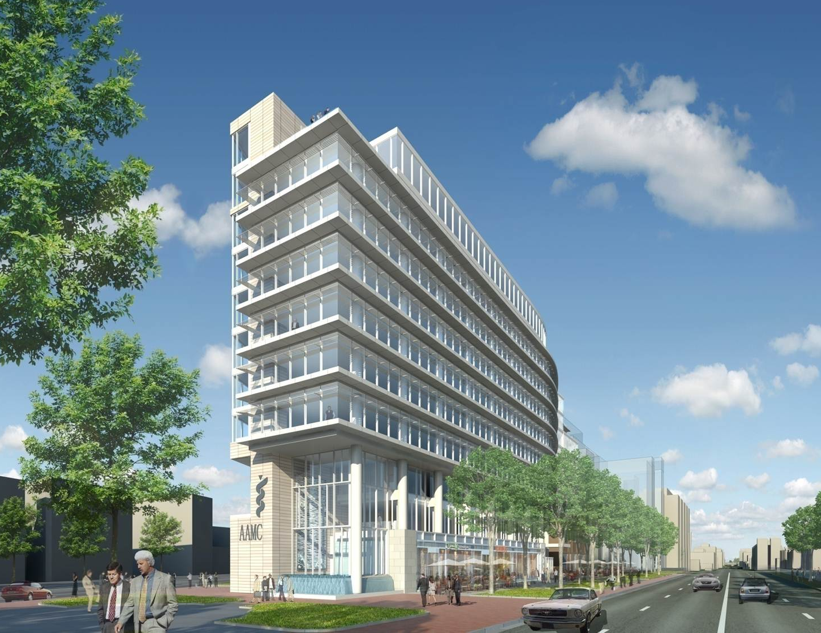BostonDrew
Active Member
- Joined
- Mar 2, 2014
- Messages
- 487
- Reaction score
- 0
If the parcels were broken up into smaller sections, the whole area would look completely different
I get that you want to see more interesting buildings, but the only thing that really makes financial sense is these big boxes.
The whole Seaport district has a hard deck over it due to FAA regulations, so its not like these guys can go out and build awesome highrises like they can in downtown or Back Bay. They have to maximize floor plate size and try to do something interesting in the process.I get that you want to see more interesting buildings, but the only thing that really makes financial sense is these big boxes. Other buildings are smaller parcels should hopefully look better, but the big parking lots are going to become big boxes.
In that context, it is a decent design. I'm having a hard time thinking of something that could look better here within the price range. Nobody is going to build the CCTV headquarters in Beijing in Seaport... it's not valuable enough real-estate to justify. Although that would definitely look pretty cool.
I dont' think Height has anything to do with the "overall design"- there are "great-well designed boxes" & there are"dumb boxes"...
OTOH The box shape is directly proportional to the "business orientated model market" & the developers, in order to maximize profits at the expense of good design. As far as parking- I'm aware of the potential problem in case of flooding to promote it underground, but this eternal issue should have been addressed in a Master Plan (If there is such) to call for a permanent solution, rather than relocating the problem that Boston already has with it....
I don't believe a CCTV-like project would ever fit Seaport Blvd either, but rather a more thoughtful planning with mix uses will create a better environment & embrace better design for these new structures.





That's a flaw in the redevelopment process. The big parking lots (or at least some of them) should have been broken up and developed separately. That would have provided a much more diverse landscape.
Busses -- you seem to suggest that there needs to be a Gruber to model the process for us and tell us how to do it
The real world doesn't work that way -- in the case of the Seaport District:
1) somebody number one* bought up the old warehouses and rail remnants that littered the landscape, took the structures down and made parking lots that were leased to some operator until the right time
2) somebody number two bought up the old parking lots and sold them or developed them into buildings**
Each of the parts of the Seaport had different somebodies* but in no place was there any financial incentive for the owner to subdivide the lots and sell off things piecemeal
* & ** Papas, McCourt, Athanas, Massport, USPS, BCEC, etc.
In general in an older community the challenge is to acquire and aggregate into big enough lot for successful development -- not to break something up
Well I guess that's that. The free market has spoken. Boring, super-blocks are the future... *snores*
Busses -- Not necessarily forever
Look at Kendall nee Cambridge Center -- all the boring super blocks are changing in big {Google), 88 Ames, perhaps soon Volpe and myriad smaller ways
Over time the ownership and occupancy will change and so will the ground floors and perhaps some of the rest as well
you just might need to wait 15 to 30 years or so
Well I guess that's that. The free market has spoken. Boring, super-blocks are the future... *snores*
Don't forget the Seaport has very strict height limits that don't necessarily exist elsewhere in the city. It's also essentially developing a new neighborhood from scratch. The free market here is too specific to really extrapolate to any other areas of the city/country/planet.
However, if you look at some of the new Chinese cities being built from scratch (ex. Tianjin's financial districts and Shenzhen) many of those cities do seem to be developing as super-blocks. They just happen to be on gargantuan scales compared to Boston.
I do think that outside of these brand new developing cities, you still need that (im)perfect storm to end up with strictly super-block development.
Lets not kid ourselves, the boxes are partially driven by maximising profits, yes. But the real driving force is that it's EASY.
